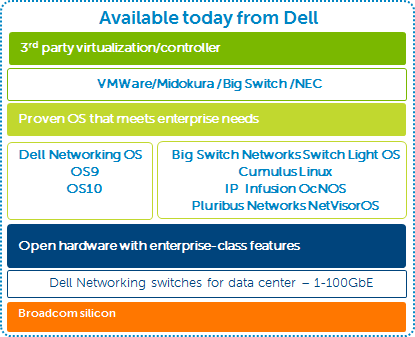We all have heard of the often used phrase that technology is experiencing exponential growth with the common reference point being Moore’s Law – the doubling of computer processing speed every 18 months. During the first session of some university courses I’ve taught, I ask students to describe common technologies from 10 years ago. Then we compare that to today’s widespread use of technologies like wireless Internet, smartphones, social networking and its pretty eye opening.
Today’s business world is experiencing a similar feeling when taking snapshots of technology advancements and how they need to adapt in almost real-time. IT data centers are being challenged on a daily basis from advancements like virtualization, changing workflows, new methods like containers and more.
Unfortunately, there is one critical infrastructure within data centers that isn’t keeping up – the network. Organizations are struggling with the rapid technology change and user demand while still running and managing outdated, inflexible, proprietary network infrastructures. A good analogy is handling modern traffic flows in and out of major metropolitan centers using the highway system of the 1960’s. Good luck.
Open Networking and Why
It departments need to take a closer look at their data center network infrastructure and ask some serious questions. Am I in control of my network or is it (and my networking vendor) in control of me? Does my network allow me to take advantage of the rapid technology innovation I’m seeing in areas like network virtualization, cloud and orchestration? Can I pick and choose best-of-breed solutions that help me specifically address my unique needs? If not, it might be time to look at open networking solutions.
Open networking is a new approach for network infrastructures where the data center switch hardware is disaggregated from the operating system software. It also incorporates key standardized technologies like off-the-shelf merchant silicon and the Open Network Install Environment (ONIE) that provide a cost-effective environment for installing different network OS’s on the same hardware platform.
By adopting open networking solutions into their data center, organizations can ensure they are positioned for optimum choice of field-proven switching hardware, network operating systems and open source tools and applications. By taking this initial step they can bring innovation back to their network infrastructure, while also laying a clear path to a software-defined, future-ready network environment.
Dell: A leader in Open Networking
Dell was the first major networking vendor to introduce the concept of open networking with the announcement of our support of Cumulus Networks’ Cumulus Linux OS on our switching platforms in January of 2014. Since then we have introduced over 7 new open 1GbE to 100GbE networking platforms, added 3rd party OS partners like Big Switch Networks, Pluribus Networks, and IP Infusion, and helped hundreds of customers implement open networking solutions in their data centers.
Dell Networking was able to accomplish this major feat through our existing experience as a market-leading networking vendor, participation in global standards organizations like OpenCompute, OpenDaylight, Open Networking Foundation and Ethernet Alliance, and a proven history of leveraging component standardization and openness with our computing products. We were recently acknowledged in the 2016 Gartner Magic Quadrant for Data Center Networking as the only major networking vendor in the visionary quadrant. And this is just the beginning.
Summary
It’s doubtful that we’ll see a slowdown of innovation and technology advancements anytime in the near future. Change is here to stay. Doesn’t it make sense to start now with transitioning your data center infrastructure to open networking? It’s a win-win proposition to help satisfy today’s growing demands on your network while also paving the way to a software-defined environment of the future.

